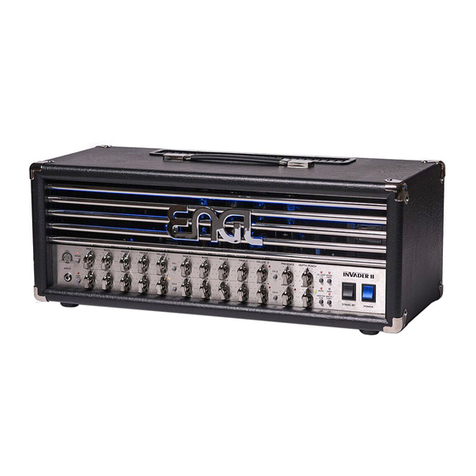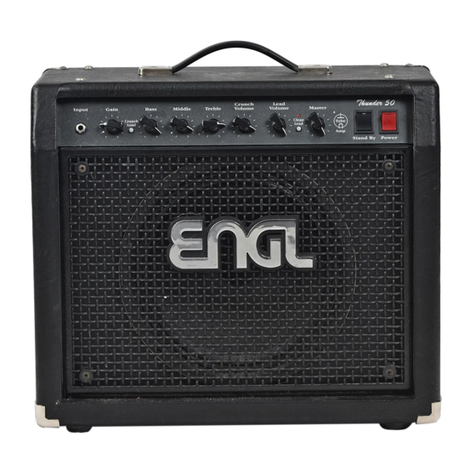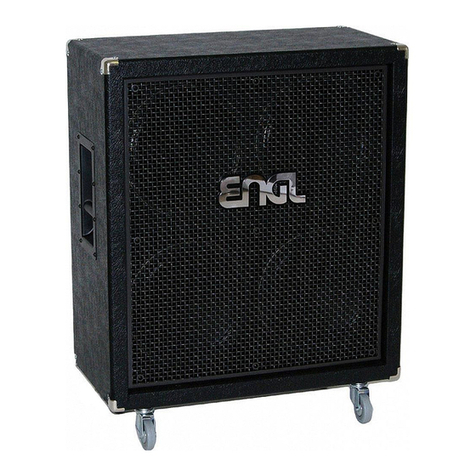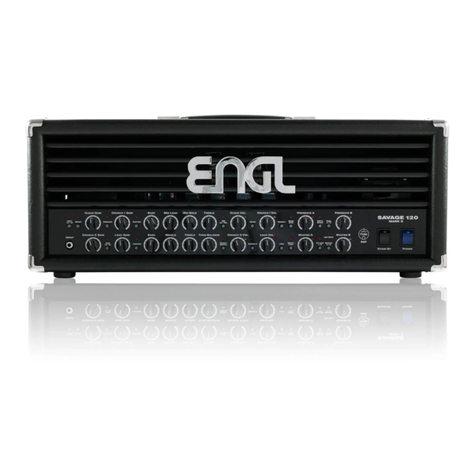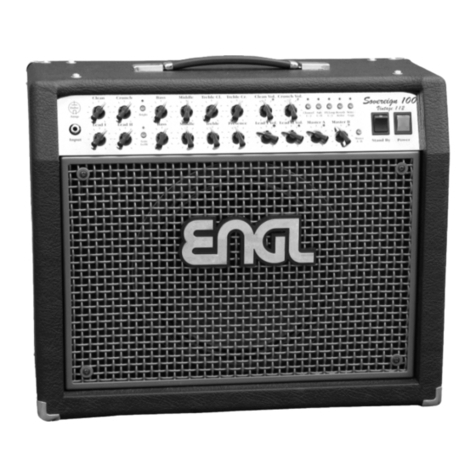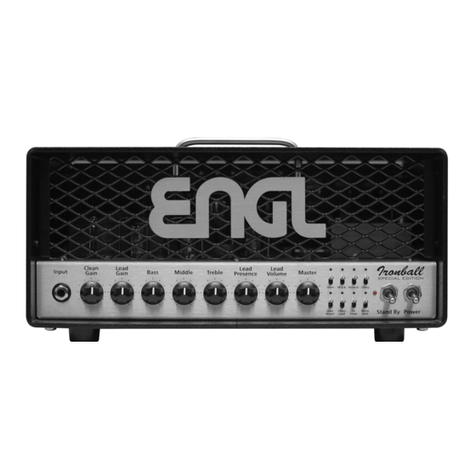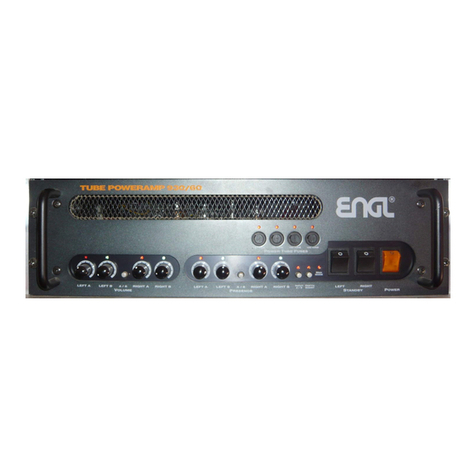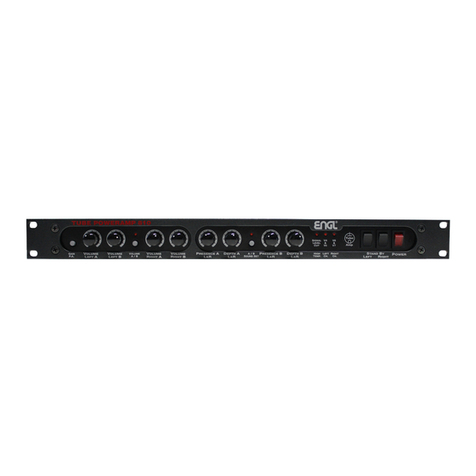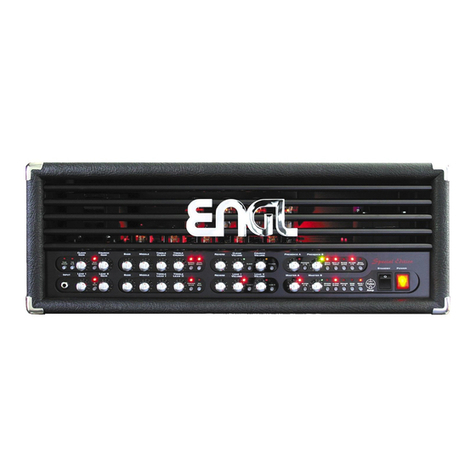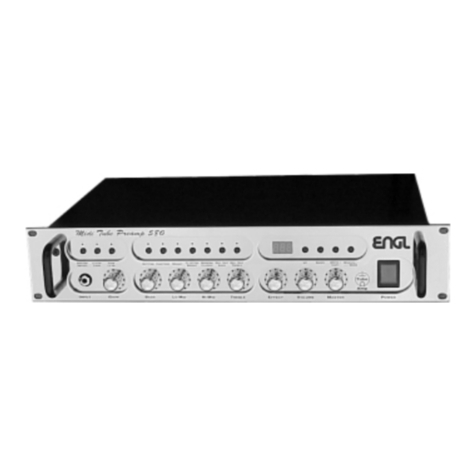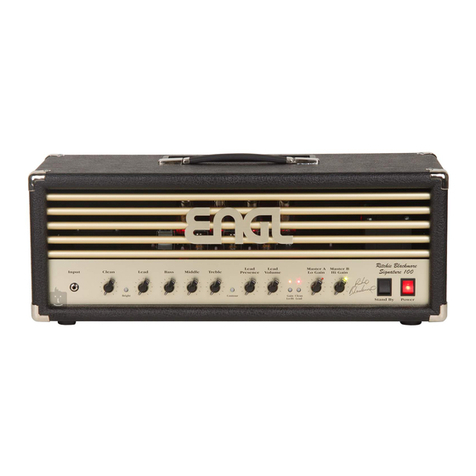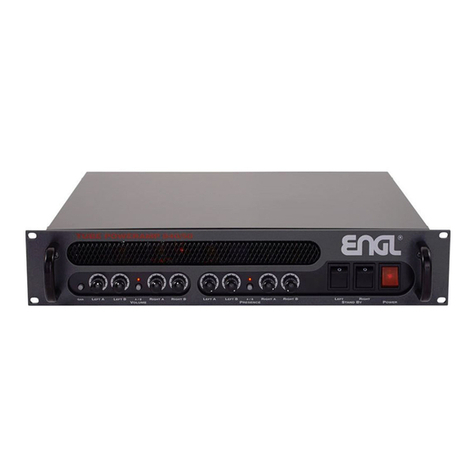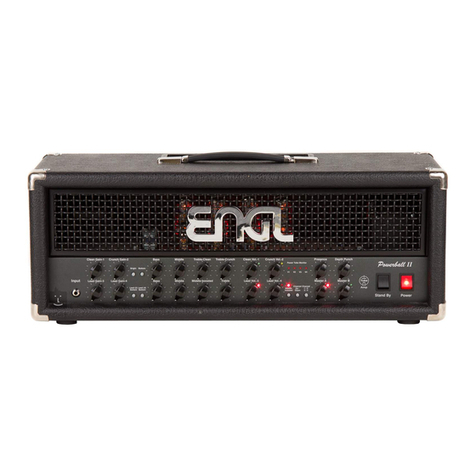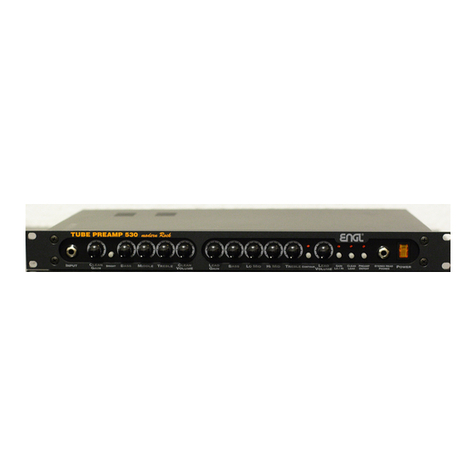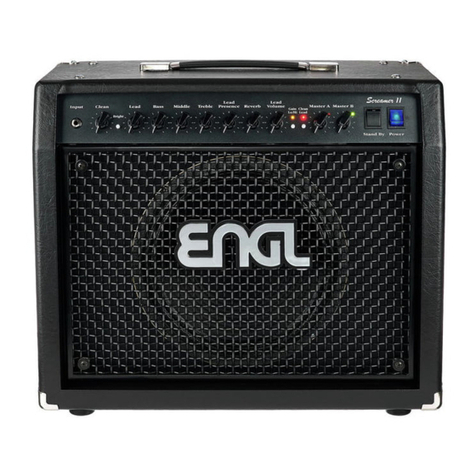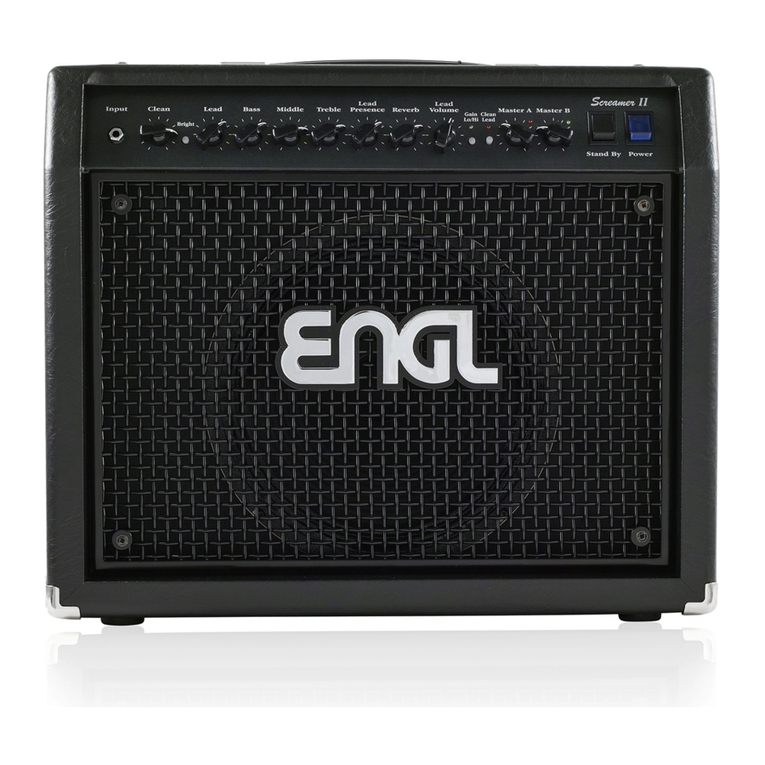3
The
ENGL SAVAGE 60
is on the cutting edge of modern guitar technology, it boasts
a number of efficient features and operating modes: two channels, Rhythm and Lead each
featuring a Gain control and an individual Boost pushbutton. Choose between Clean or Crunch
tones in the Rhythm channel, and a lo end Lead for focused projection or hi gain Lead with an
emphasized bottom end in the Lead Channel. Separate volume controls and an additional EQ
section in the power amp for each channel allow for precision-tuning between the channels.
The Hi Range Suppressor is a unique innovation combined with the 3- band voicing contol
system: This new contol affects the response of the Treble control in the high mid range and
therefore it enlarges the tonal variations and assists the fine-tuning of the mid and high
frequency range. Another clever feature: Two independent volume levels for the Master
control, switchable via footpedal, automatically giving you the volume you want for solos.
This amp also features a number of signal paths: a passive, parallel/serial (!) FX loop, a variable
balanced line out featuring speaker simulation and an overload LED, and 8 and 16 z speaker
outputs. The integrated ECS (Emergency Circuit System) protects the amp from damage due
to power tube defects/failure and ensures the amp continues to function at reduced power
until the failed tube can be replaced.
Intelligent design features, superior craftsmanship and finishing and quality components are
what this device is all about. However keep in mind, that a few precautions will radically extend
tube life (see handling and care guidness).
PLEASE NOTE:
Read the Operator’s Manual carefully and thoroughly, especially the following Handling
and Care section as well as the framed guidelines. Avoid operating errors and potential
damage to the amp by heeding the guidelines and cautionary remarks in this manual. The
footnotes also cover a few convenient pointers and interesting tips on several functions.
These are listed at page 6 and 7 of the manual. This manual covers all the features, operational
guidelines, technical specifications and many helpful hints and tips. It should answer all your
questions, so keep it in a safe place and refer to it when necessary.
Handling and Care
Protect the amp from mechanical knocks (tubes!).
Let the amp cool down before you transport it (app.10 minutes).
Tubes need about 20 seconds to warm up after you switch the power on,
and furtheron a few minutes before they reach their full power capability.
Avoid storing the amp in damp or dusty rooms, they are hard on jacks,
switches and potentiometers.
Make sure air can circulate at the front and top of the amp
to allow for adequate cooling (increases component life).
Never operate the amp without an adequate load.
Replace tubes with select ENGL replacement tubes (special selection criteria) to avoid
microfonic properties, undesireable noise and unbalanced performance.
